Presidential History at CPP
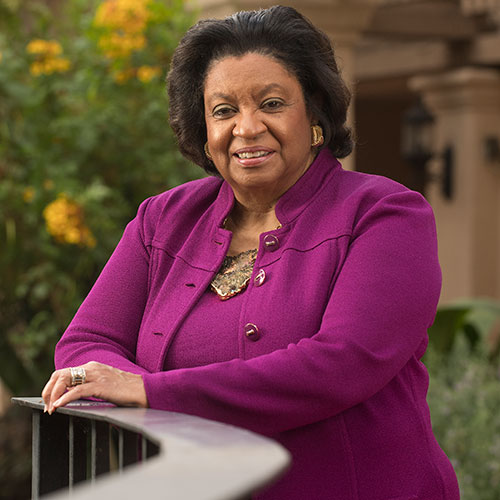
Soraya M. Coley, 2015 to Present
Soraya M. Coley, a veteran administrator with more than 20 years of experience in higher education, became the sixth president of Cal Poly Pomona in January 2015.
Coley came to Cal Poly Pomona from Cal State Bakersfield, where she was the provost and vice president for academic affairs from 2005 to 2014. She served as interim vice president for university advancement in 2011-12.
Her experience includes serving as Cal State Fullerton’s dean of the College of Human Development and Community Service, as administrative fellow, and professor and department chair for the human services department. She was the system-wide provost and vice president for academic affairs at Alliant International University, from 2001 to 2003.
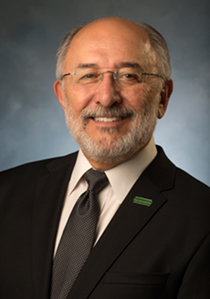 J. Michael Ortiz led the university to increased graduation rates, to improved student access to educational programs and to numerous citations for academic excellence. He also enhanced the quality of student life on campus. By 2013-14, enrollment had increased to approximately 22,500 students.
J. Michael Ortiz led the university to increased graduation rates, to improved student access to educational programs and to numerous citations for academic excellence. He also enhanced the quality of student life on campus. By 2013-14, enrollment had increased to approximately 22,500 students.
Significant building projects completed include the addition of a three-building complex of student residential suites, a renovated and expanded University Library, a new College of Business Administration complex, a new Veteran’s Resource Center and the Bronco Recreation and Intramural Center. Several building projects received LEED designation, demonstrating the university’s continued commitment to sustainability.
Ortiz is credited with securing the largest cash gift in the history of the CSU system, a $42 million donation in 2011 from the W.K. Kellogg Foundation to serve underrepresented students, including military veterans and former foster youth. A champion for first-generation and underrepresented students, Ortiz worked with the CSU Chancellor’s Office to expand its black, Latino and Asian American Pacific Islander initiatives.
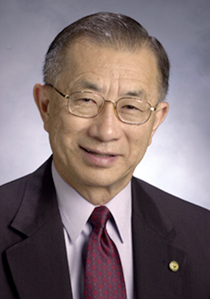 Bob Suzuki, the fourth president, emphasized the importance of diversity, helped establish the cultural centers and educational equity programs, improved academic quality through the creation of the Faculty Center for Professional Development and developed significant partnerships with the city of Pomona.
Bob Suzuki, the fourth president, emphasized the importance of diversity, helped establish the cultural centers and educational equity programs, improved academic quality through the creation of the Faculty Center for Professional Development and developed significant partnerships with the city of Pomona.
During his tenure, Suzuki raised more than $110 million to help fund more than $200 million in new construction projects, which included a state-of-the-art engineering building, an expanded complex for The Collins School of Hospitality Management, a biotechnology building (4) and the Rain Bird BioTrek learning center. He also oversaw the campus’ first high-speed network and greatly improved hardware and software infrastructure.
Other highlights include more than $75 million in university grants and contracts, greatly increasing research and scholarship opportunities, as well as the founding of International Polytechnic High School (iPoly) on campus; and the creation of the Cal Poly Pomona Downtown Center to increase the university’s engagement with the Pomona community.
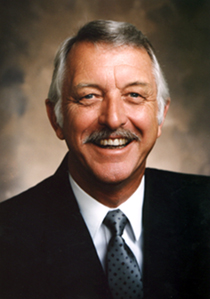 Hugh La Bounty was appointed acting president in 1977 and became the university’s second president in 1978. He had already served Cal Poly in a variety of roles for more than 25 years, having come to the Voorhis campus as a junior instructor in 1953.
Hugh La Bounty was appointed acting president in 1977 and became the university’s second president in 1978. He had already served Cal Poly in a variety of roles for more than 25 years, having come to the Voorhis campus as a junior instructor in 1953.
During his tenure and despite the challenges following passage of Proposition 13, Cal Poly Pomona continued to grow. Fundraising commenced, the curricula expanded and enrollment continued to increase. There was also a renewed emphasis on the importance of international ties, which included establishing the International Center and expanding foreign study programs, including new exchanges with universities in China. New programs included the trustee-in-residence and the legislator-in-residence programs.
Physical changes to campus included the conversion of W.K. Kellogg’s historic horse stables into university offices, the University Office building (94), new bookstore, the W. Keith and Janet Kellogg University Art Gallery, the Collins Center for Hospitality, University Village, and installation of the university’s private telecommunications system.
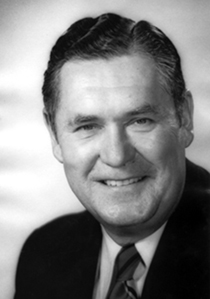 The first president of the newly independent Cal Poly Pomona, Robert Kramer managed a period of explosive growth. Enrollment grew from just under 5,000 students to more than 13,000 students, and the number of academic programs expanded from 20 to 69, including the addition of the first graduate degree, a master’s in biological sciences, and bachelor of arts programs.
The first president of the newly independent Cal Poly Pomona, Robert Kramer managed a period of explosive growth. Enrollment grew from just under 5,000 students to more than 13,000 students, and the number of academic programs expanded from 20 to 69, including the addition of the first graduate degree, a master’s in biological sciences, and bachelor of arts programs.
To meet the increased demand, Kramer oversaw the construction of eight new buildings, including the University Library, the engineering building, environmental design (07), the science building (08), the music building (24) and University Theatre, the Kellogg Gymnasium (43), the W.K. Kellogg Arabian Horse Center (29) and the Kellogg West Conference Center. Kramer also oversaw a substantial increase in overseas exchange programs, including exchanges with Brazil, Greece, Guatemala, Saudi Arabia and Zambia.
In 1969-70, Cal Poly Pomona was accredited as a separate entity by the Western Association of Schools and College. Two years later, Cal Poly was granted university status.
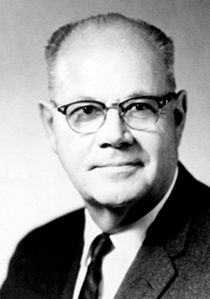 Julian McPhee assumed the presidency of Cal Poly San Luis Obispo in 1933 and was instrumental in setting the polytechnic “learn-by-doing philosophy” that remains a hallmark. Cal Poly Pomona was founded as in the 1938 upon the acquisition of the Voorhis School for Boys property in San Dimas for a Southern California branch for the university. McPhee served as president of both campuses until his retirement in 1966.
Julian McPhee assumed the presidency of Cal Poly San Luis Obispo in 1933 and was instrumental in setting the polytechnic “learn-by-doing philosophy” that remains a hallmark. Cal Poly Pomona was founded as in the 1938 upon the acquisition of the Voorhis School for Boys property in San Dimas for a Southern California branch for the university. McPhee served as president of both campuses until his retirement in 1966.
In 1940, Cal Poly was given permission by the state to offer four-year bachelor’s degrees. Following increased demand for higher education after WWII, McPhee brokered a deal with W.K. Kellogg for Kellogg’s 81-acre horse ranch in Pomona for Cal Poly’s southern campus. The 1949 gift from the W.K. Kellogg Foundation was the largest ever received by a California state college. The Kellogg campus opened for class in fall 1956 and for the first-time offered a full four-year program.
During McPhee’s tenure, Cal Poly grew from 117 students to 12,000 students on two campuses and added 50 new buildings. At his retirement, the California State University Board of Trustees decided to separate the campuses into separate institutions with different presidents.